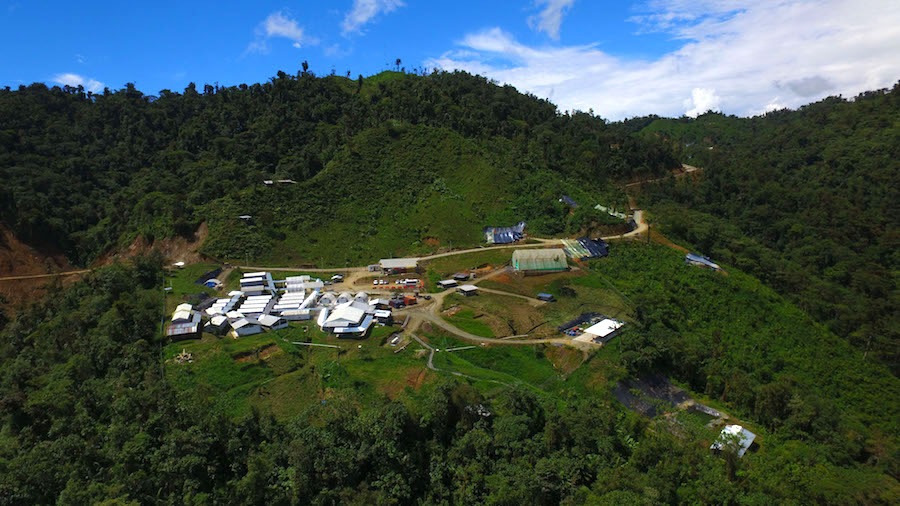
Australia’s SolGold (LON, TSX:SOLG) announced Thursday it had made a new key discovery in the northern part of Ecuador’s Andean copper belt, this time in its Sharug project, one of the company’s 12 priority prospects.
The miner, which holds 72 mineral concessions in Ecuador through four subsidiaries, said it had found a new porphyry copper-gold-molybdenum system — Santa Martha — in the northern part of the Sharug 2 concession.
SolGold had previously intercepted a mineralized field in the same area, the Quillosis prospect, registering grades of up to 39.6 grams of gold per tonne of ore.
The best returns include one hole with 2.5% copper, 0.2 grams of gold per tonne, and 491 parts of molybdenum per million. In another, SolGold found 0.8% copper, 0.5% grams of gold, and six parts per million of molybdenum.
“The Santa Martha copper-gold porphyry target has the real extent and copper endowment at surface to yield a significant copper gold porphyry orebody and the Quillilosa epithermal gold target is probably related and just as big,” chief executive Nick Mather said.
The news comes on the heels of a preliminary study published by Ecuador’s Energy Ministry indicating that SolGold’s Cascabel copper-gold project, 180 km north of the capital Quito, has the potential to be among the world’s ten largest copper, silver and gold mines.
The Alpala mineral deposit in particular, which is located in the Cascabel region, “could become the largest underground silver mine, third-largest gold and sixth-largest copper in the world,” energy minister Carlos Pérez said in a statement.
SolGold’s Cascabel project could become the world’s largest underground silver mine, third-largest gold and sixth-largest copper
Carlos Pérez, minister of energy
Independent analysis of the deposit shows that underground mining operations at Alpala could extend from 49 to 66 years, with Cascabel boasting mineral reserves of 10.9 million tonnes of copper and more than 23 million ounces of gold.
In the first year, forecast production is expected to reach around 207,000 tonnes of copper, 438,000 ounces of gold and 1.4 million ounces of silver, according to official data.
Local communities, however, recently asked the Constitutional Court for permission to hold a referendum on mining in the provinces where SolGold’s 85% owned Cascabel project and other wholly owned exploration projects are located.
The court is expected to deliver its verdict before the end of the month.
Over the past two years, SolGold has grabbed headlines as it made progress on Cascabel, one of the few new major copper-bearing projects expected to come online in the near future.
Australia’s largest gold producer, Newcrest Mining (ASX: NCM), upped its stake in SolGold in December to 15.33% from 13.83%, to secure a portion of Cascabel.
The move further boosted Newcrest’s position in SolGold against No.2 shareholder, BHP, which in September had bought a 6.1% stake in the explorer.
Miners are scrambling for copper projects amid forecasts that demand for the metal will significantly outstrip supply from 2020, due to increasing demand for power generation and electric vehicles (there are 300kg of copper in an electric bus and nine tonnes per windfarm megawatt).
According to Colin Hamilton, director of commodities research at BMO Capital Markets, the current copper pipeline is the lowest seen this century, both in terms of numbers and capacity.
“After delivery of Cobre Panama we are left with a gap until we see the next batch of 200ktpa-plus projects in 2022-23. This is when the likes of Kamoa, Oyu Tolgoi Phase 2, and Quebrada Blanca 2 are likely to offer meaningful supply growth,” Hamilton said.
Ecuador has gained ground as a mining investment destination over the past two years, thanks to a revised regulatory framework and a major investor engagement campaign.